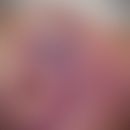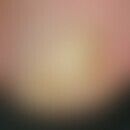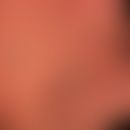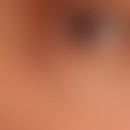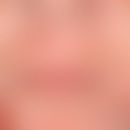Synonym(s)
DefinitionThis section has been translated automatically.
Creams with an aqueous external phase as well as oil-in-water emulsifiers like sodium or trolamine soaps, sulfated fatty alcohols, polysorbates, possibly in combination with water-in-oil emulsifiers (also called complex emulsifiers ). They have to be preserved, p-hydroxybenzoic acid esters, sorbic acid and potassium sorbate as well as benzyl alcohol are suitable for this.
Pharmacodynamics (Effect)This section has been translated automatically.
You might also be interested in
IndicationThis section has been translated automatically.
IncompatibilityThis section has been translated automatically.
If non-ionic emulsifiers are contained, the incorporation of phenolic substances can lead to a loss of effectiveness or even to the breaking of the emulsion, depending on their concentration (see Table 1).
Hydrophilic creams containing anionic emulsifiers may break during the processing of cationic active agents due to the formation of poorly soluble salts as this emulsifier is removed from the system by salt formation. At the same time a loss of efficacy occurs as the bound pharmaceutical substances are no longer released or are released in reduced quantities.
Inhomogeneities can be caused by active ingredients such as aluminium chloride, bamipine HCl, benzalkonium chloride, benzyl alcohol, calcium chloride, cetylpyridinium chloride, chlorocresol, chlorphenoxamine-HCl, chlortetracycline-HCl, Dimetine maleate, diphenhydramine HCl, dithranol, ethacridine lactate, eucalyptol, gentamicin sulphate, hexachlorophene, hydroxyquinoline sulphate, β-naphthol, neomycin sulphate, parabens, oleum thyme, oxytetracycline HCl, pheniramine hydrogen maleate, phenol. liquefact.., pix. betulin., pix junip., pix lithanth., polidocanol, procaine HCl, resorcinol, salicylic acid, tetracaine HCl, tetracycline HCl, tyrothricin and undecylenic acid.
Chloramine T causes a change in smell.
Dithranol, pyrogallol, silver nitrate and tetracycline-HCl cause colour changes.
Recipe(s)This section has been translated automatically.
PreparationsThis section has been translated automatically.
Abitima base cream, Alfason base Cresa, Ash base cream, Decoderm base cream, Dermatop base cream, Essex base cream, Excipial cream, Jellin base cream, Linola cream, Neribas cream, Wolff base cream, Hydrophilic ointment DAB (Unguentum emulsificans aquos)
TablesThis section has been translated automatically.
Compatibility of drugs in non-ionic hydrophilic creams
Acridine flavinium chloride 2% |
Dimetine maleate 1% |
Lactic acid 5 |
allantoin 0,5% |
Dimeticone 10% |
Sodium chloride 10 |
aluminium chloride 10% |
Diphenhydramine HCl 2% |
neomycin sulfate 0,5%. |
Ammonium bituminosulphonate 10 |
Erythromycin 2% |
Nicotinic acid benzyl ester 3%. |
Amphotericin B 3% |
Ethacridine lactate 1% |
nitrofurazone 0,2% |
anthrarobin 2% |
Eucalyptol 10% |
Nystatin 100 000 IU/g |
azulene 0,2% |
fluocinolone acetonide 0,1% |
Oleum Pini 1,5 |
bacitracin 500 IU/g |
Fomocaine hydrochloride 1% |
Pheniramine hydrogen maleate 1,25% |
Bamipine HCl 2% |
Gentamicin sulphate 0,2 |
Polymyxin B 0,2% |
Benzocaine 10% |
Urea 10% Urea |
Polyvidon iodine 10% |
Benzoic acid 5% |
Hexachlorophen 1% |
Prednisolone 0,5% Prednisolone |
Benzoyl peroxide 5% |
Hydrarg. sulf. rubr. 1% |
Procaine HCl 2% |
betamethasone-17-valerate 0,1% |
hydrocortisone 0,2% |
Sulphur 5% |
Bufexamac 5% |
Hydrocortisone acetate 1% |
Sorbic acid 0,1% of |
calcium chloride 5% |
hydroxyquinoline sulfate 0,5%. |
Sulphadiazine 5% |
Chloramphenicol 1% |
potassium iodide 3,5%. |
sulfisomidine 5% |
Chlorophenoxamine-HCl 1,5% Chlorophenoxamine-HCl 1,5% Chlorophenoxamine |
Camphor 5% |
terpiniol 1,5 |
Chlortetracycline HCl 3% |
Cod liver oil 10% |
Tinctura Myrrh 3% |
Chrysarobin 5% |
Liq. alum. acet. 20% |
tretinoin 0.1% |
Clioquinol 5% |
Liq. carb. deterg. 10% |
triamcinolone acetonide 0,1 |
clotrimazole 1% |
Menthol 5% |
Undecylenic acid 5% |
dexamethasone 0,1% |
Merbromine 2% |
Zinc oxide 10 |
Dexpanthenol 5% |
Methyl salicylate 5% |
Zinc undecylenate 5% |
Compatibility of drugs in anionic hydrophilic creams
allantoin 0,5% |
Erythromycin 2% |
Oleum Pini 1,5 |
Ammonium bituminosulphonate 10 |
Urea 10% Urea |
Oleum Thyme 1,5 |
Amphotericin B 3% |
hexachlorophene 0,5 |
Phenol. liquefact. 1% |
anthrarobin 2% |
Hydrarg. sulf. rubr. 1% |
Polidocanol 3% |
azulene 0,2% |
hydrocortisone 1% |
Polyvidon iodine 10% |
bacitracin 500 IU/g |
potassium iodide 3,5%. |
Resorcinol 5% |
Benzocaine 10% |
Camphor 5% |
Salicylic acid 5% |
Benzoic acid 5% |
Cod liver oil 10% |
Sulphur 5% |
Benzoyl peroxide 5% |
Liq. alum. acet. 20% |
Sorbic acid 0,1% of |
betamethasone-17-valerate 0,1% |
Liq. carb. deterg. 10% |
Sulphadiazine 5% |
Bufexamac 5% |
Menthol 5% |
sulfisomidine 5% |
Chloramphenicol 1% |
Merbromine 2% |
tannin 1% |
chlorocresol 0,12 |
Methyl salicylate 5% |
terpiniol 1,5 |
Chrysarobin 5% |
Lactic acid 5 |
Tinctura Myrrh 3% |
Clioquinol 5% |
β-Naphthol 6% |
tretinoin 0.1% |
clotrimazole 1% |
Sodium chloride 10 |
triamcinolone acetonide 0,1 |
dexamethasone 0,1% |
Nicotinic acid benzyl ester 3%. |
tyrothricin 0,1% |
Dexpanthenol 5% |
nitrofurazone 0,2% |
Zinc oxide 10 |
Dimeticone 10% |
Nystatin 100 000 IU/g |
Zinc undecylenate 5% |
